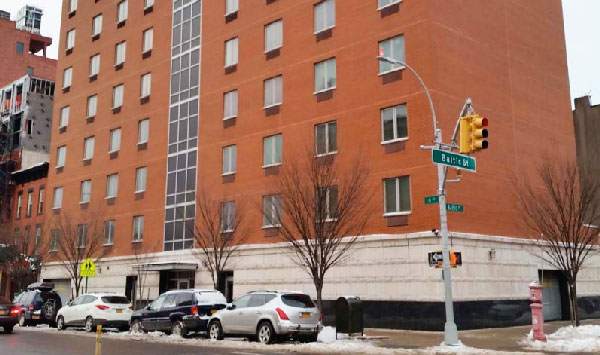
BY DUSICA SUE MALESEVIC | The mayor’s sweeping plans to relax zoning rules recently faced another gust of blowback, with a smackdown by the Manhattan Borough Board.
The board — made up of the borough’s 12 community board chairpersons, City Council delegation and the borough president — passed two resolutions of “conditional disapproval” of the zoning proposals at a special meeting on Nov. 30.
The resolutions essentially rejected the mayor’s two proposals, recommending that the Council vote them down unless significant changes are made.
The first proposal, called “Zoning for Quality and Affordability,” aims to promote below-market-rate housing for seniors and mixed-income housing in exchange for reducing parking requirements near public transit, and easing building rules to allow elements such as courtyards and bay windows.
It would also allow buildings to be 5 feet taller or more to encourage ground-floor retail, which requires high ceilings. Downtowners who fought for height restrictions in their neighborhoods, such as the East Village and Lower East Side, are particularly concerned about allowing additional height.
The second proposal, “Mandatory Inclusionary Housing” would apply to future large residential developments that need zoning variances, and would require that 25 to 30 percent of the units be kept permanently below market rate. But it would not apply to Manhattan below 96th St. on the East Side and 110th St. on the West Side.
The borough board’s resolutions were based on the many concerns Manhattan Borough President Gale Brewer and other officials had spelled out in a Nov. 17 letter. They asked for changes to increase oversight, guard against abuses and preserve particular restrictions involving narrow streets and midblock building heights.
The resolution on the Mandatory Inclusionary Housing proposal also demanded the removal of a loophole allowing developers to sidestep participation if the Board of Standard and Appeals deems it a “hardship.”
The borough board approved the resolutions 12 to 0 with 4 abstentions.
All the community board chairpersons present voted for the resolutions while almost all councilmembers present abstained — except for Rosie Mendez of the East Village, who voted with the community board leaders.
Borough President Brewer will issue her office’s formal recommendation on the zoning proposals by Dec. 11, and the City Planning Commission will conduct a public hearing on the proposals on Wed., Dec. 16.
As in Manhattan, nearly all community boards across the city have opposed the proposals, and every borough board that has voted on them so far has likewise passed resolutions recommending rejection unless there is a litany of changes to the proposals. But most councilmembers have remained mysteriously mum, refusing to take any position publically, and either abstaining in borough board votes, or skipping them altogether.
Like it or not, councilmembers will eventually have to make their views known when the zoning amendments go before the Council for a vote early next year.

















